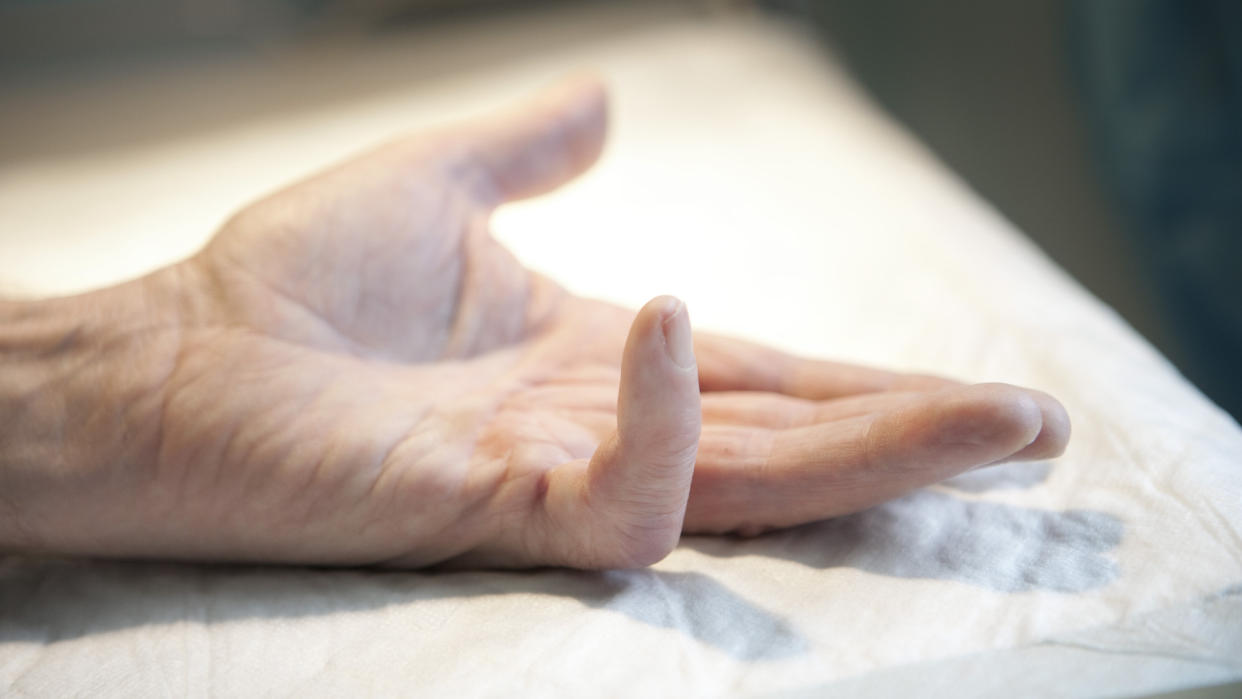Mysterious 'Viking disease' linked to Neanderthal DNA

- Oops!Something went wrong.Please try again later.
Neanderthal genes may be one cause of the disorder nicknamed the "Viking disease," in which fingers become frozen in a bent position, a new study finds.
The study, published June 14 in the journal Molecular Biology and Evolution, finds gene variants that were inherited from Neanderthals that dramatically increase the odds of developing the condition, officially called Dupuytren's disease.,
Dupuytren's disease is a crippling hand disorder named after a French surgeon, in which the fingers, typically the ring and little fingers, become permanently locked in a bent position. The condition is very common in Northern European countries where the Vikings settled, hence its nickname. It typically afflicts about 30% of men over 60 years in Northern Europe and seems to run in families. Treatment is mainly surgical, but recurrence is common. Although smoking, alcoholism, diabetes and anti-seizure medication can increase the odds of developing the disease, the exact cause has remained elusive.
The rarity of Dupuytren's disease among Africans led Dr. Hugo Zeberg, an evolutionary geneticist at Karolinska Institute in Stockholm, to wonder whether the genes tied to the disease came from Neanderthals, given that Africans have very limited Neanderthal ancestry.
Related story: Neanderthals passed down their tall noses to modern humans, genetic analysis finds
The researchers combined data from three large biobanks in the U.S., the U.K. and Finland comprising 7,871 cases and 645,880 controls in people of primarily European descent. They found 61 genetic variants tied to a higher risk of Dupuytren's disease.
Next, they compared these gene variants with the previously sequenced Neanderthal genome. To their surprise, they discovered that, of these 61 variants, three variants were of Neanderthal origin, of which two were very strongly linked to the disease. The Neanderthal gene most strongly linked to the disease, called EPDR1, sits on chromosome 7.
This isn't the first time that Neanderthal genes left behind in modern humans have been linked to disease. A 2014 study in the journal Nature tied several present-day human diseases — such as diabetes, Crohn's disease, lupus and cirrhosis — to Neanderthal DNA remnants.
But the link between Dupuytren's disease and these Neanderthal gene variants is especially strong. Two of the genetic mutations were the second- and third-most strongly associated with the odds of having the disease, respectively. "This is a very strong association," Zeberg told Live Science.
Severe COVID-19 is the only other disease that has been found to have such a strong genetic connection with Neanderthals, Zeberg added.
"It's an interesting study that sheds new light on the genetic basis of Dupuytren's disease," Serena Tucci, an anthropologist and evolutionary geneticist at Yale University who was not involved in the study, told Live Science in an email, adding that it's the first to tie the disease to remnant DNA from our close human relatives.
People with roots outside Africa have about 2% Neanderthal DNA in their genome. So statistically, by random chance, you would expect Neanderthal DNA to collectively account for around 2% of the genetic risk of the disease. "But here we find that 8.4% is explained by Neanderthal gene flow," much more than is expected by chance alone, Zeberg noted.
Related stories
—Nobel prize in medicine awarded to geneticist who sequenced Neanderthal genome
—Human and Neanderthal brains have a surprising 'youthful' quality in common, new research finds
—Do You Carry Neanderthal DNA? The Shape of Your Skull May Tell.
Previous work on Dupuytren's implicated the EPDR1 gene; this gene encodes ependymin-related 1 protein, which plays a role in muscle contractility.
The new research strengthens the case that mutated versions of the EPDR1 protein lead to Dupuytren's. The study has implications for future targeted therapy, Zeberg said.
As next steps, Zeberg hopes to do more clinically oriented research on the disease. Searching for other diseases tied to remnant DNA from Denisovans, the East Eurasian cousins of Neanderthals, is also on the agenda.

